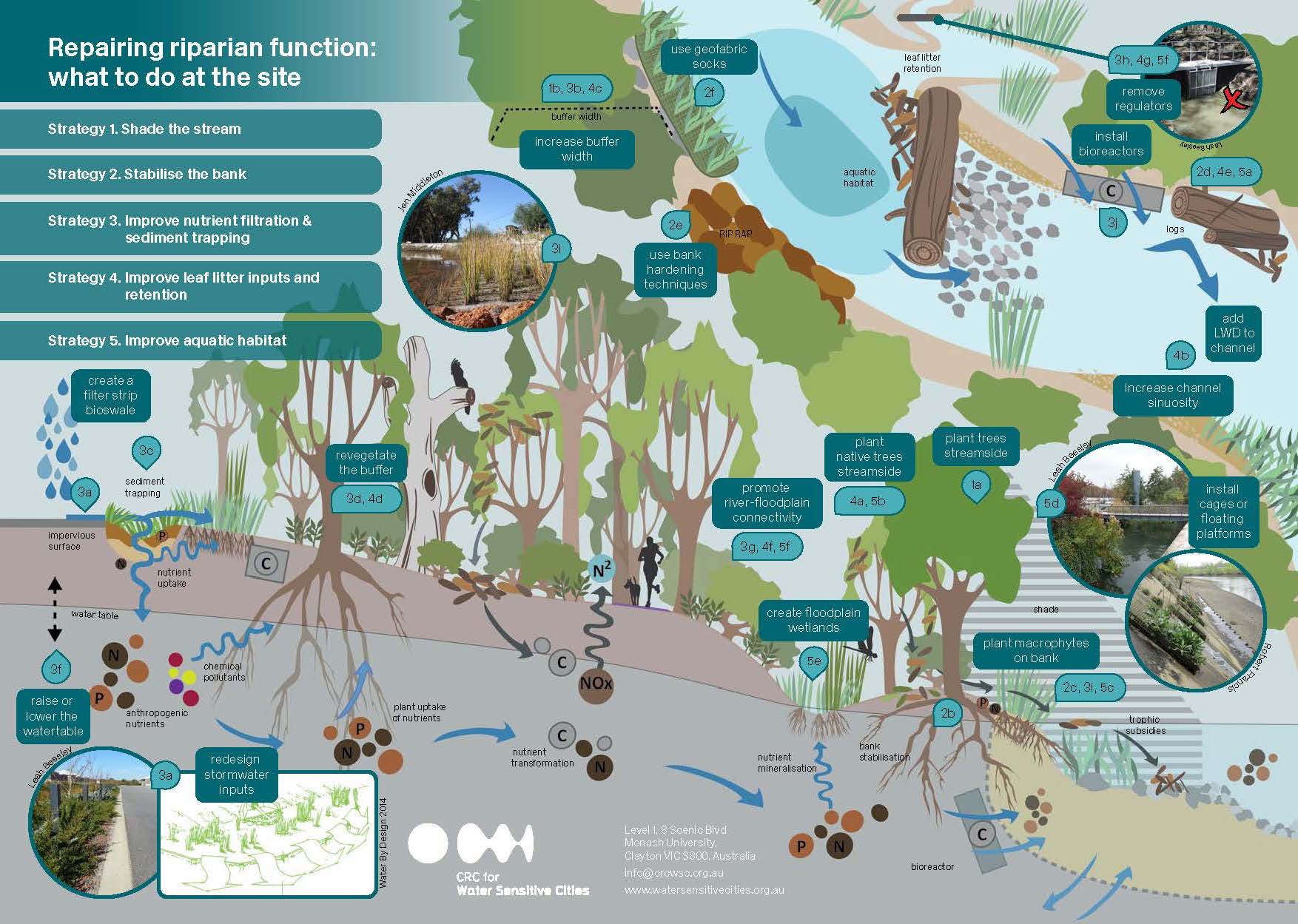New factsheets offer strategies for restoring urban waterways
Posted on 9 April, 2019 by Ivan
Landcare groups have worked hard to help restore and revegetate many of our urban waterways within the Shire of Mount Alexander of central Victoria. The Cooperative Research Centre for Water Sensitive Cities has just released a new product designed to walk practitioners through the nine components of repairing or designing a living stream site on a flowing urban waterway, and to support them in working out which actions to take.
The 13 factsheets about improving the ecological function of urban waterways cover nine different ecological components of flowing waterways: flow, geomorphology, riparian, connectivity (longitudinal, lateral, vertical), water quality (nutrients, physico-chemistry including toxicants) and biota. Most components have two factsheets—one for what to do at the site scale and the other for what to do at the catchment scale—so practitioners have more context and can work at both spatial scales.

How to restore the ecological function of urban waterways
Each factsheet gives the practitioner strategies to follow and the situations where the strategy will be most suitable and effective. Actions, rationales, and the relevant technical guidelines to follow are outlined for each strategy, as are clear diagrams and a list of useful supporting documents. The factsheets aren’t prescriptive but provide a useful resource for better understanding the environmental factors and urban constraints at a restoration site, and how each might be addressed.
The urban waterways of Castlemaine have seen great improvements over the years, and may benefit further from the implementation of these useful resources. These factsheets provide a practical starting point and an instructive resource for restoring urban waterway sites, such as a creek or stream channel, a constructed drain, a lowland river or a living stream built in a new urban development.
For more information or to download the factsheets, please click here






Leave a Reply